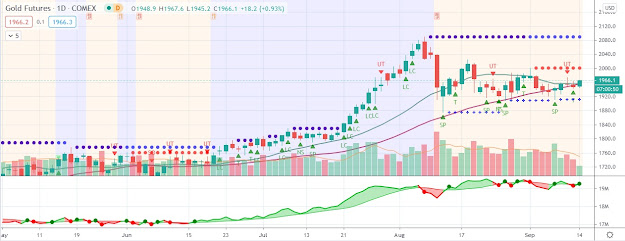Gold physical demand supports gold on dips
 We believe gold remains a buy on dips. Not only do financial market conditions support gold investment demand, but the physical gold market also remains supportive. We have seen strong physical selling and scrap gold coming to market during the first two weeks of November as the gold price pushed above $1,400. However, the latest decline in the gold price to below $1,350 last week has spurred renewed physical buying interest.
We believe gold remains a buy on dips. Not only do financial market conditions support gold investment demand, but the physical gold market also remains supportive. We have seen strong physical selling and scrap gold coming to market during the first two weeks of November as the gold price pushed above $1,400. However, the latest decline in the gold price to below $1,350 last week has spurred renewed physical buying interest.As a result our Standard Bank Gold Physical Flow Index (GPFI) has jumped into positive territory after lingering in negative territory earlier this month (an index value greater than zero indicates net buying in the physical gold market, while a value less than zero indicate net selling).
Once again it appears the return of buying interest in the market is an indication that the physical gold market is slowly adjusting to the higher gold price and now sees a “higher low” in the gold price as a buying opportunity. Long-term this is a bullish sign.
We continue to expect gold physical demand to prevail on dips. However, the demand on dips might not be as strong as it has been in October during the run up to Diwali in India. But on balance Indian demand should remain positive until at least mid-December on the back of wedding season. We also still have the festive seasons in the Western Hemisphere as well as Chinese New Year. In 2011 Chinese New Year is on 3 February. With regard to physical flows going forward: Our analyses find that Q2 is the second strongest quarter for jewellery demand behind Q4, after controlling for the gold price. But physical demand may fall away in February and March next year, before picking up in April.
We note that physical demand is dominated by investment demand and we need to be cognizant of drivers of investment demand. We believe the gold market is pricing the $600bn of QEII
already. Our estimates are based on gold's close relationship since 2004 with global liquidity of which the Fed's balance sheet makes up an important component. This implies we cannot base an argument for greater investment demand and a higher gold price purely on a Fed QEII liquidity argument. We need to look for something else that will drive prices lower or higher.
However, we do believe sovereign credit risk in Europe would provide investment demand for gold. Combined with the physical market which looks to provide support on dips for gold we believe gold in euro-terms should outperform gold in dollar-terms for the time being.



Comments
Post a Comment